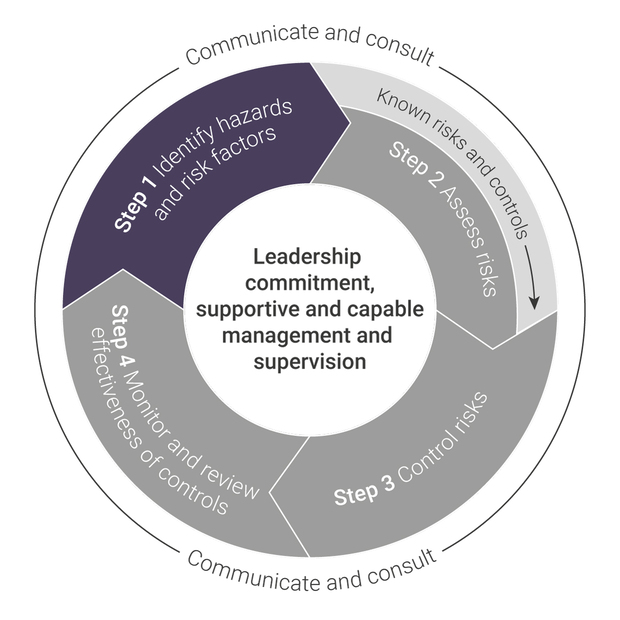On 31 March 2022, the Work Health and Safety (WHS) laws replaced the health and safety elements of the Mines Safety and Inspection laws. For information visit www.demirs.wa.gov.au/whs
All health and safety notifications, forms and guidance for mining and petroleum has moved to the WorkSafe website
The information below has been left for historical compliance reference purposes

Identifying psychosocial hazards and risk factors
The first step in the risk management process is to identify all work-related psychosocial hazards and risks. These can arise from organisational (e.g. work organisation, job design, poor workplace culture) and environmental factors (e.g. noise, temperature, humidity).
A comprehensive risk assessment should identify all foreseeable psychosocial hazards and risk factors. This may require input from operational groups and subject matter experts (e.g. organisational psychologists, organisational development consultants, human resources consultants).
Psychosocial hazards and risk factors in the workplace may be identified in a variety of ways, including:
- reviewing organisational structure (e.g. lines of reporting, supervisory responsibilities)
- inspecting the condition of the physical workplace (e.g. equipment is working)
- assessing specific job requirements within the organisation
- observing how work tasks are completed
- consulting with the workforce through safety and health representatives, focus groups or surveys
- analysing workplace data (e.g. hazard and incident reports, human resources data, workers’ compensation claims).
Note: The same risk management processes used for physical health and safety may be applied to mental health and wellbeing.
See Psychosocial hazards overview for a list of common work-related psychosocial hazards and risk factors

